Sequoia and Kings Canyon National Parks
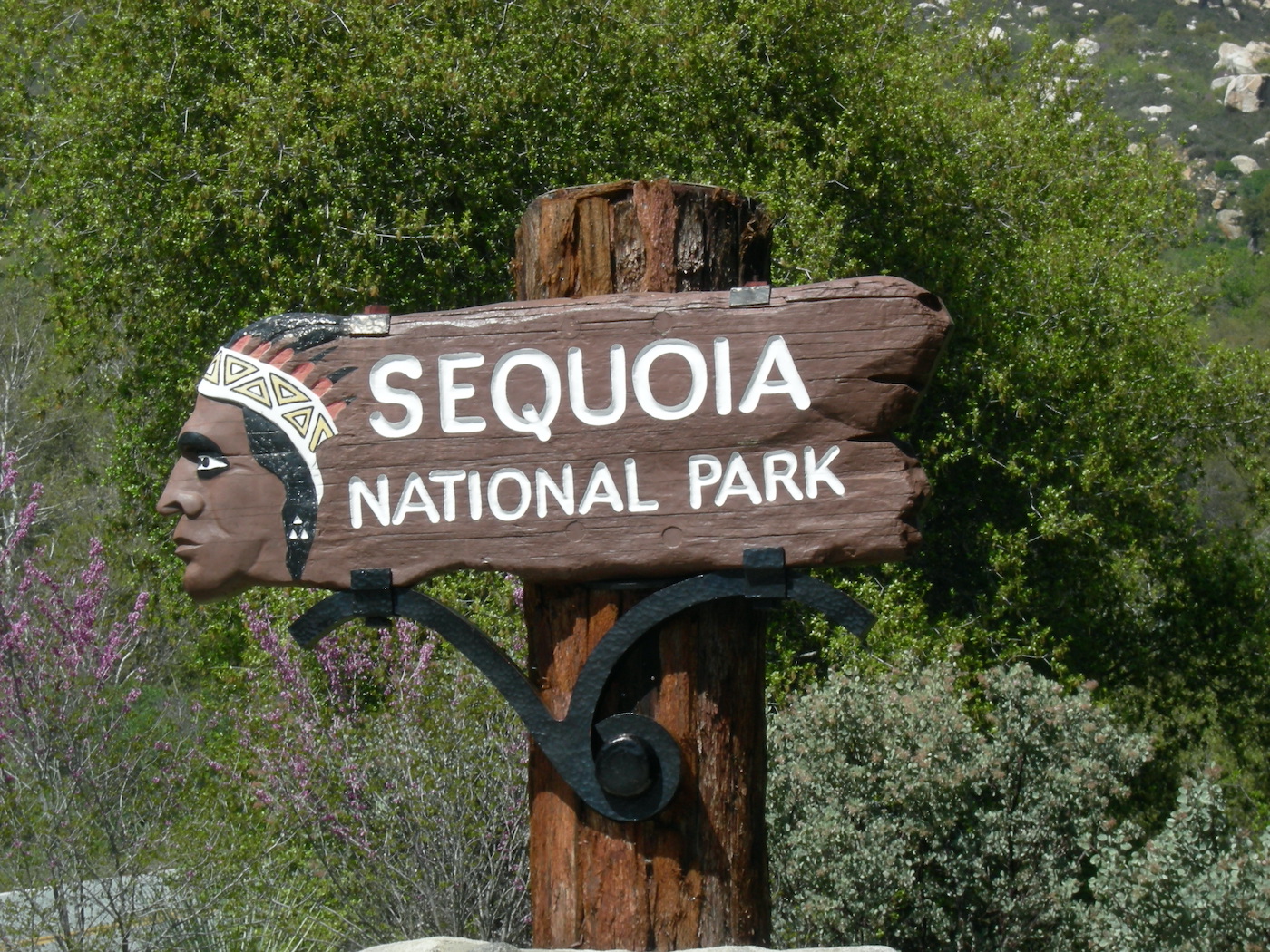
Advice from a tree: Stand tall and proud, remember you roots, reflect the light of your true nature, drink plenty of water, enjoy the view!

My son Dane and daughter-in-law Alli live in Three Rivers, California. Where is that, you ask? Head for Bakersfield and Visalia, turning toward the right following the signs to get to Sequoia National Park. Three Rivers is the gateway village of 2,000 folks that leads to the park about five miles up the road. Dane and Alli feed many visitors at their sub and salad take-out restaurant. They are in the top 100 in the United States, according to Yelp.
Yes, there are three rivers that converge in Three Rivers. We spend Thanksgivings there and this time we headed into the park. As the book says, Sequoia and Kings Canyon National Parks are located in central California and extend from the San Joaquin Valley foothills to the eastern crest of the Sierra Nevada. “If trees could be kings, their royal realms would be in these two adjoining parks.” They have the world’s largest trees.
Sequoia National Park was established in 1890 and was California’s first national park. It is America’s second oldest after Yellowstone. Kings Canyon National Park was established in 1940, incorporating the much smaller General Grant National Park, which was established a week after in 1890. Together they cover 865,964 acres. The lowest elevation is 1,370 feet in the Ash Mountain area, and the highest is 14,494 feet at the summit of Mount Whitney.
We drove to Crescent Meadow and to see the General Sherman Tree, Earth’s largest living tree. When my daughter-in-law was in the third grade, her class went to see the tree, holding hands so classmates could circle it. But, there weren’t enough children to do the job. You really can’t understand just how big the sequoias are until you put a person alongside. They are one of the oldest living trees on Earth. Their dense bark is sometimes two-feet thick and is its defense to brush firs and insect invasions.
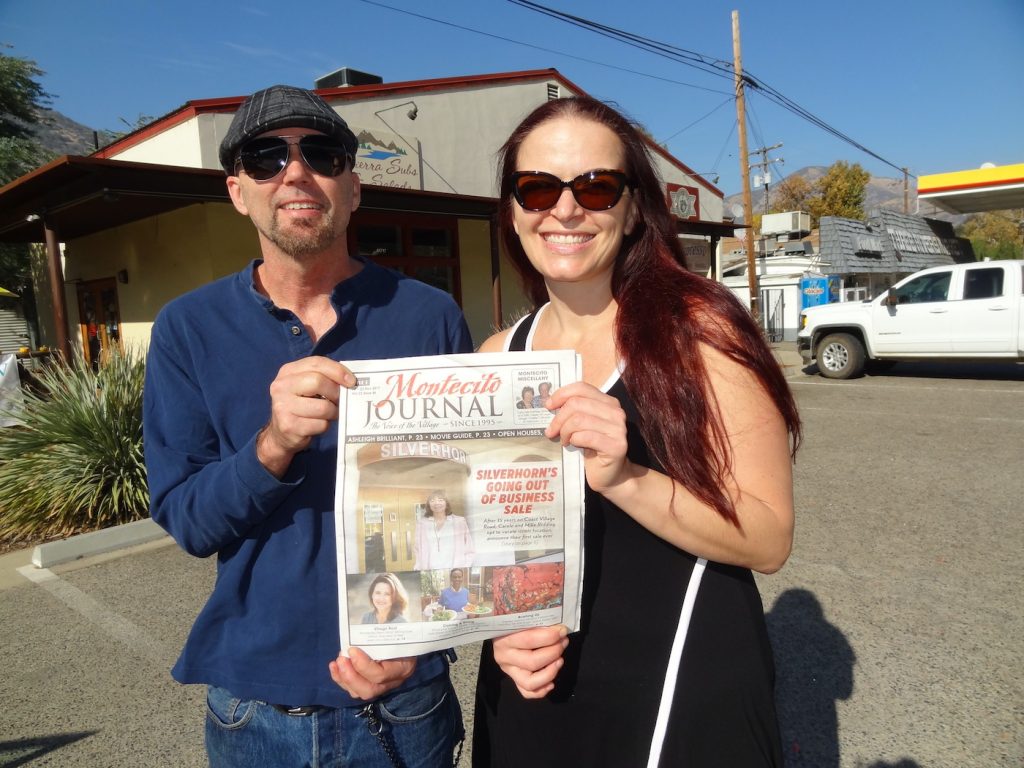
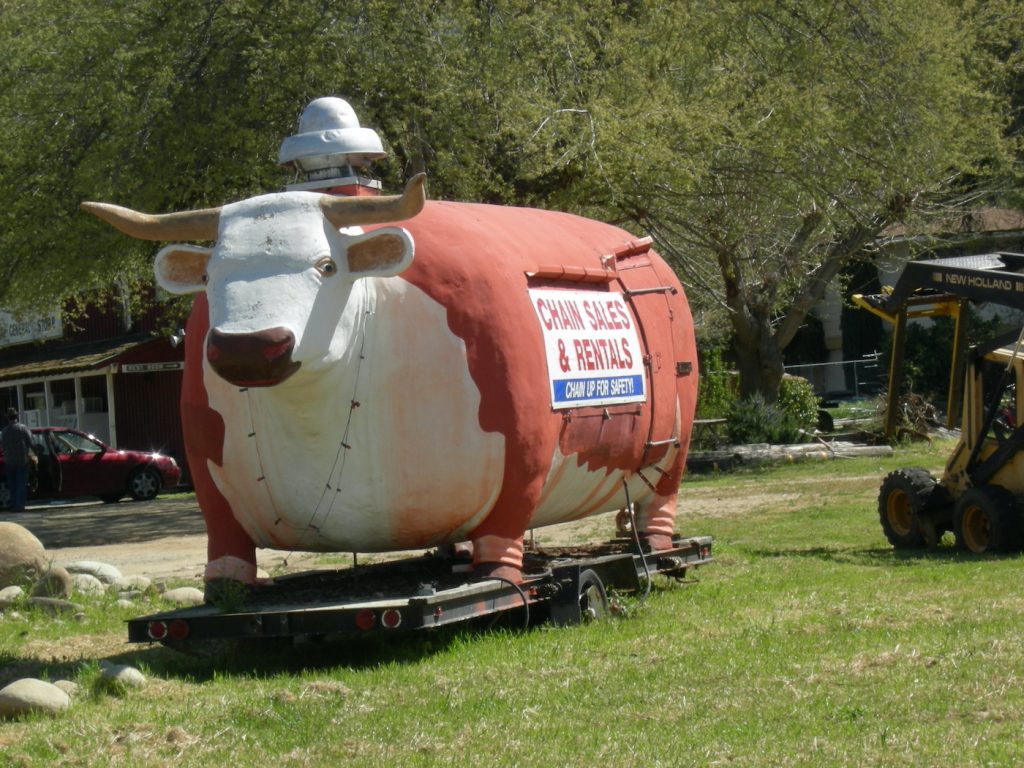
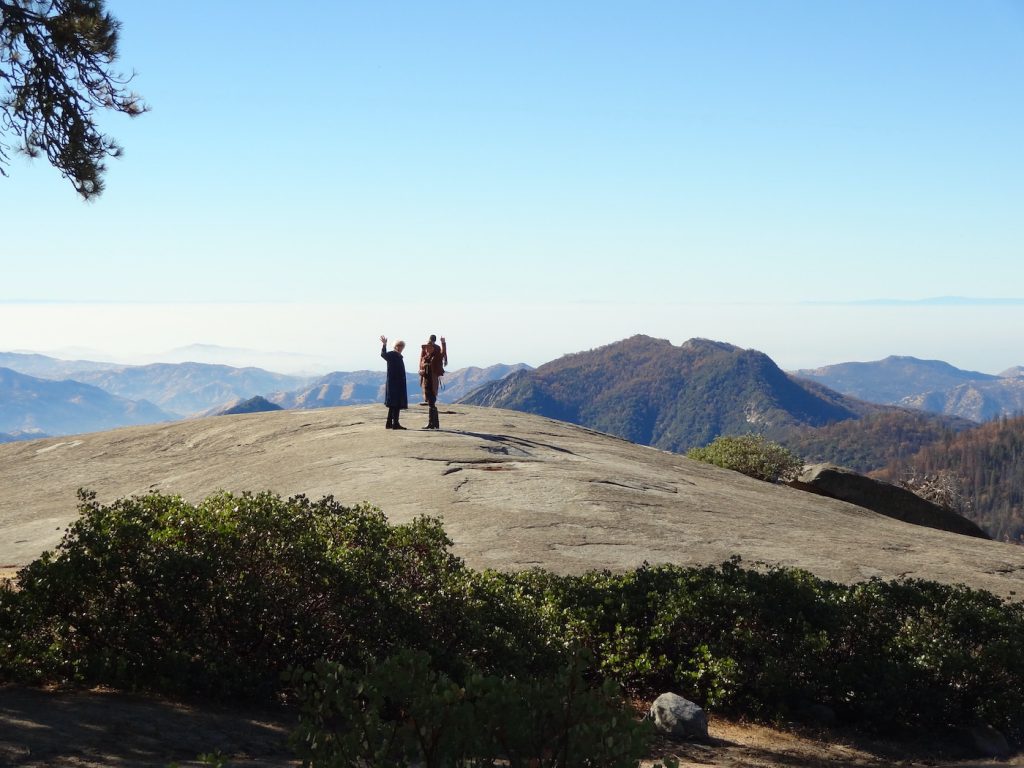
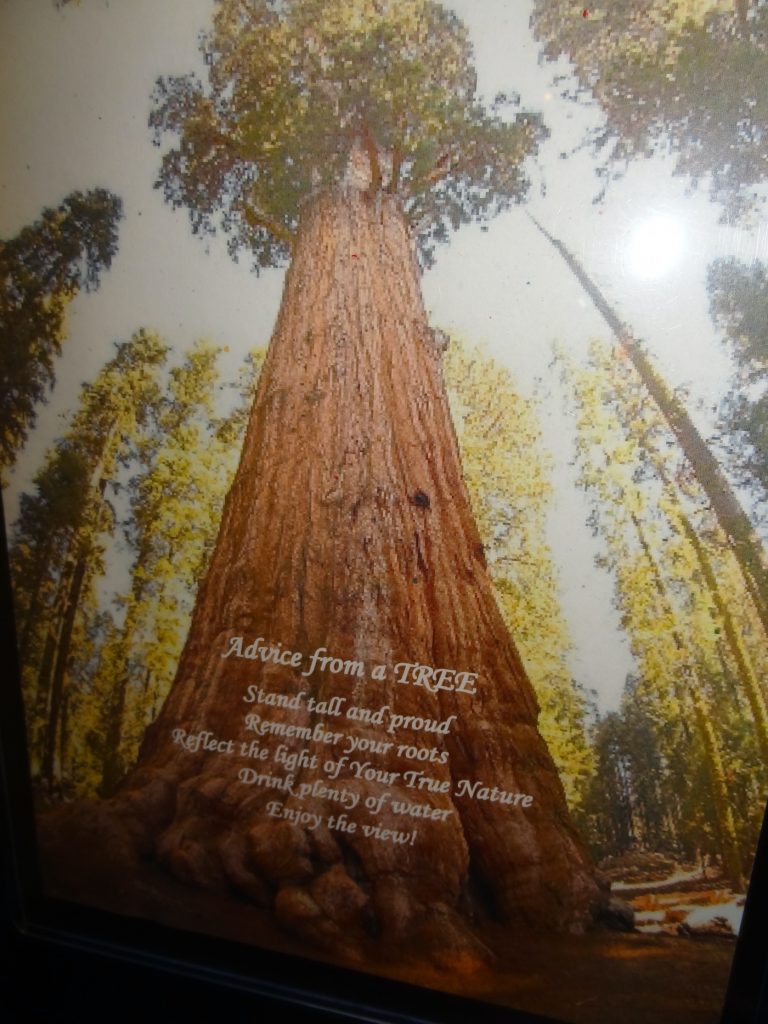
The California Coast Redwood is taller and more slender. They can reach up to 370 feet while sequoias rarely top 300 feet. But the General Sherman is considered the largest because of its volume. It weighs about 2.7 million pounds and is believed to be approximately 2,200 years old. It is 275 feet tall (about the same height at the Statue of Liberty), and its circumference at ground level is 102.6 feet. The diameter of its largest branch is 6.8 feet. Every year, it adds enough wood to make a 60-foot tree measuring one foot in diameter and it’s still growing. James Wolverton, a pioneer cattleman who had served under general William Tecumseh Sherman in the Civil War, named it in 1879.
Fires offer many benefits because they eliminate forest floor debris and the ashes also act as a natural fertilizer for new growth. The trees reproduce by seeds only. The fire heats sequoia cones and dries out the cone scales, releasing seeds to germinate. It also creates openings in the canopy for sunlight to reach seedlings. This used to be done naturally by small lighting-struck fires. Now, man controls the fire burns.
There are 800 miles of marked trails and more than 1,200 campsites plus a variety of lodging accommodations in both parks. We went to the charming lodge for lunch but should probably have taken a picnic instead. Lions, and tigers, and bears – oh, my! There’s lots of wildlife, including mountain lions and bears.
In 1903, only 450 people visited Sequoia and Kings Canyon. Last year, almost 1.7 million visitors came. To protect these special places, try using the free in-park shuttle during the busy summer season or make a reservation on the Sequoia Shuttle, which goes from Visalia, Exeter, and Three Rivers.
Would you believe that nearly 300 buildings were removed from Sequoia National Park in the 1990s: also a gas station, a sewage treatment plant, a hotel, two markets, and more than 24 acres of asphalt. It was a giant forest restoration project.
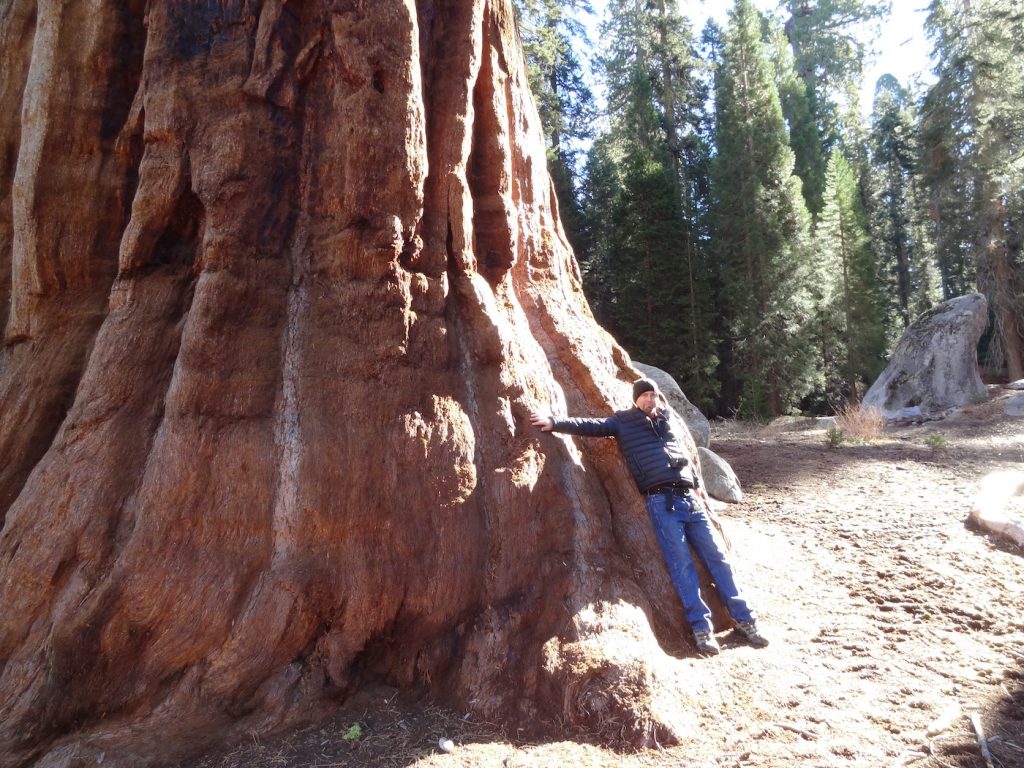
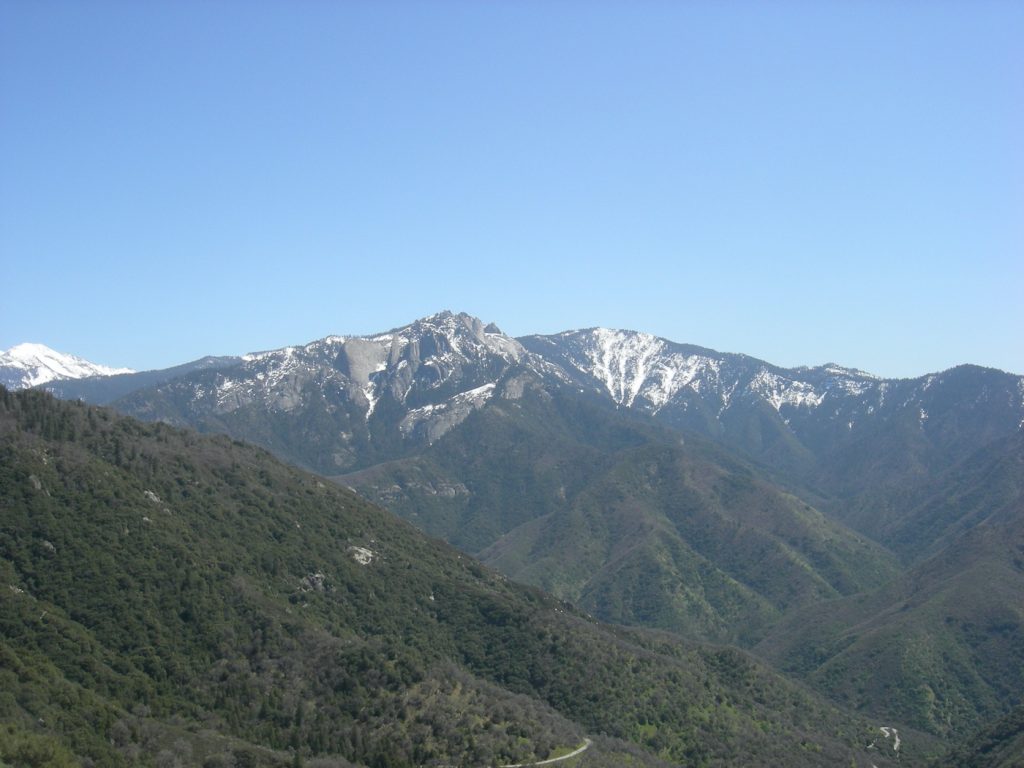
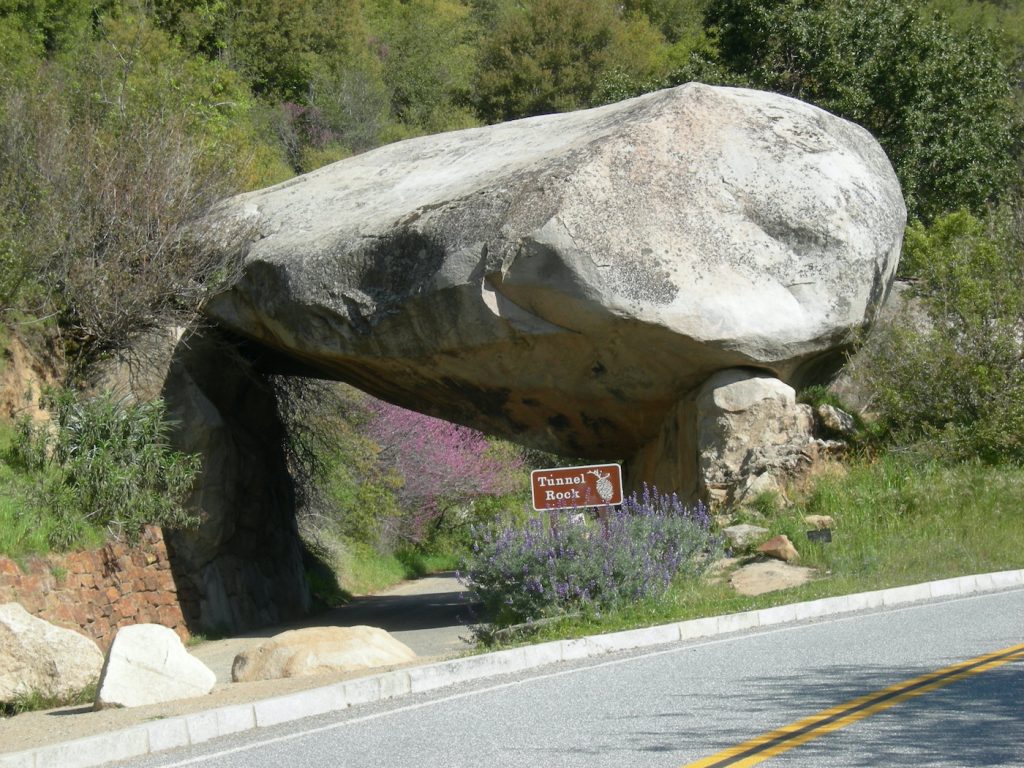
John Muir was a fan of the area after visiting in 1873. By the 1870s, ranchers grazed the cattle and sheep and saw mills were built. The early loggers proceeded to chop down and carry away one-third of the ancient trees. Their wood made pencils and even grape stakes in early California vineyards. But mid-19th century conservationists came to the rescue.
Finally, after years and much debate on September 25, 1890, president Benjamin Harrison signed the bill that established Sequoia Nation Park, America’s second national park. A week later, Congress increased the park’s size to protect the General Grant Grove. National parks are uniquely American and signified the government’s intentions to limit unrestrained exploitation of the land.
America’s federal, state, and local parks and public lands generate $200 billion in annual economic activity and support more than 1 million jobs. Trees produce oxygen we need to survive, but they also save money. It’s estimated that trees in cities save $400 billion to retain storm water. A single tree can store 100 gallons or more, which helps keep streets from flooding, and the list goes on. Besides, it feels good to leave the city and get out in nature.
As president Franklin Delano Roosevelt said, “There is nothing so American as our national parks.” So, take a hike! For more information, log on to OhRanger.com or threerivers.com or call Sequoia Foothills at (559) 561-3300. Pets are not allowed on the trails, but there are kennels in nearby towns.







You must be logged in to post a comment.